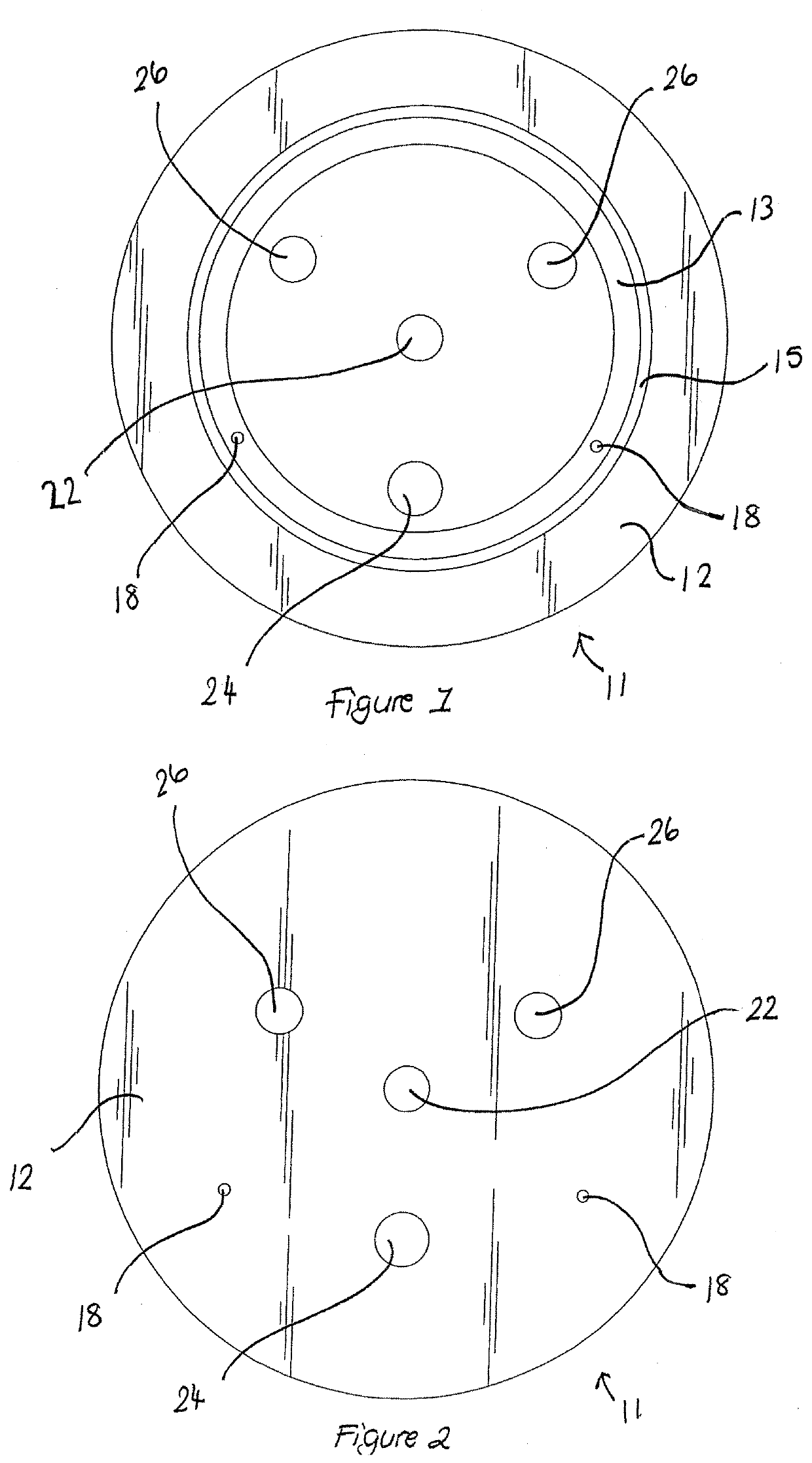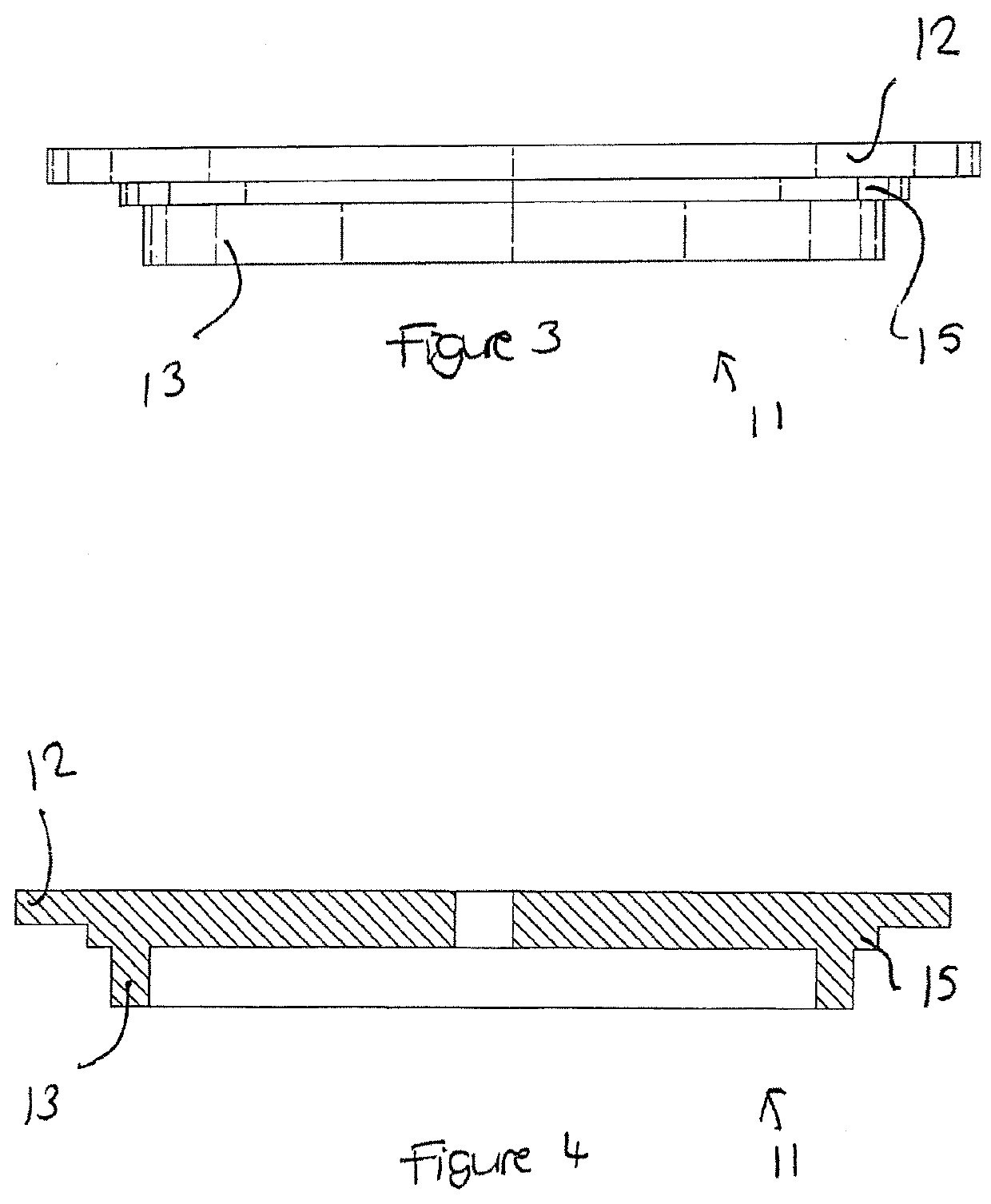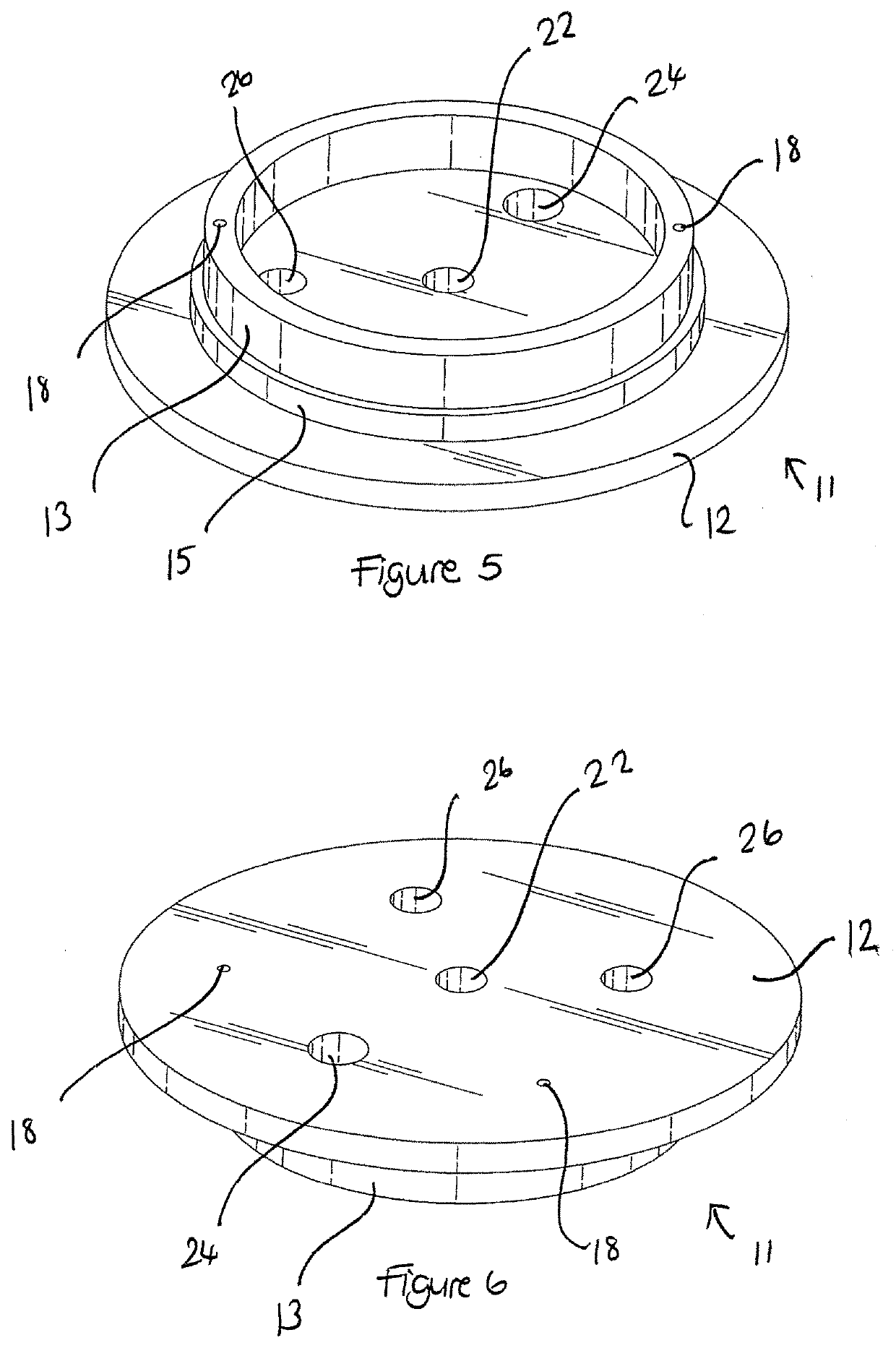Apparatus buffer and method for ph control
a buffer and apparatus technology, applied in the field of apparatus, buffer solutions and apparatus for ph control, can solve the problems of media changing the hydrodynamics of the test conditions, creating foaming, labor-intensive, time-consuming and impractical, etc., to achieve the effect of masking the bitter taste, facilitating the release of drugs, and optimising stability
- Summary
- Abstract
- Description
- Claims
- Application Information
AI Technical Summary
Benefits of technology
Problems solved by technology
Method used
Image
Examples
example 1
Preparing Bicarbonate Buffer
[0060]Hydrochloric acid aqueous solution (0.1 M, Solution A) was heated to 37° C. in dissolution vessels used for USP I and II apparatus (Table 1). Sodium hydroxide aqueous solution (2M, Solution B) was added to solution A under stirring. Ions that comprise Hanks buffer were dissolved in water to desired concentrations (Solution C). One example of such composition is NaCI (73.3 mM / L), KCI (5.370 mM / L), Mg SO4.7H2O (0.812 mM / L), CaCl2 (1.260 mM / L), Na2HPO4.2H2O (0.337 mM / L) and KH2PO4 (0.441 mM / L). Solution C and D were added to the mixture of Solution A and B under stirring and adequate volume of deionised water was added to the vessel to make the final volume to 900 ml. The pH and buffer capacity of the resultant solution was measured using the InoLab pH720 meter after 1 minute of mixing at 50 rpm with the paddle apparatus (USP II).
TABLE 1Components for preparing bicarbonate bufferSolution ASolution BSolution CSolution D0.1M2.0MCombination0.2MHClNaOHof i...
example 2
Preparing Bicarbonate Buffer
[0061]Hydrochloric acid aqueous solution (0.1 M, Solution A) was heated to 37° C. in dissolution vessels used for USP I and II apparatus (Table 2). Sodium hydroxide aqueous solution (2M, Solution B) was added to solution A under stirring. Sodium bicarbonate powder was dissolved in Solution C (as described in Example 1) and the resultant solution was immediately added to the mixture of Solutions A and B. The pH of the resultant solution was measured using the InoLab pH720 meter after 1 minute of mixing at 50 rpm with the paddle apparatus (USP II).
TABLE 2Components for preparing bicarbonate bufferSolution ASolution BSolution CSolution D0.1M2.0MCombinationNaHCO3HClNaOHof ionsas powderWaterpH ofBuffer capacity(ml)(ml)(ml)(g)(ml)buffer(mMol / L / ΔpH)70033.21000.54qs 9005.6—70033.81000.54qs 9006.0—700341000.54qs 9006.24.270034.51000.54qs 9006.54.970034.91000.54qs 9006.83.8
example 3
Preparing Bicarbonate Buffer
[0062]Hydrochloric acid aqueous solution (0.1 M, Solution A) was heated to 37° C. in dissolution vessels used for USP I and II apparatus (Table 3). Sodium hydroxide aqueous solution (2M, Solution B) was added to solution A under stirring. The FaSSIF / FeSSIF powder (for Solution E) (Biorelevant.com) was dissolved in Solution C (as described in Example 1). Sodium bicarbonate powder was dissolved in the above mixture of Solutions C and E. The resultant solution was immediately added to the mixture of Solutions A and B. The pH of the resultant solution was measured using the InoLab pH720 meter after 1 minute of mixing at 50 rpm with the paddle apparatus (USP II).
TABLE 3Components for preparing bicarbonate bufferSolutionSolutionSolutionSolutionSolutionDEFasted orABCNaHCO3FaSSIF / Fed status0.1 M2.0 MCombinationinFeSSIFTargetto beHClNaOHof ionspowderpowderWaterpH ofsimulated(ml)(ml)(ml)(g)(g)(ml)bufferFed700341000.5411.2qs 9005.6Fasted70033.21000.542.24qs 9005.7
PUM
| Property | Measurement | Unit |
|---|---|---|
| Length | aaaaa | aaaaa |
| Fraction | aaaaa | aaaaa |
| Fraction | aaaaa | aaaaa |
Abstract
Description
Claims
Application Information
 Login to View More
Login to View More - R&D
- Intellectual Property
- Life Sciences
- Materials
- Tech Scout
- Unparalleled Data Quality
- Higher Quality Content
- 60% Fewer Hallucinations
Browse by: Latest US Patents, China's latest patents, Technical Efficacy Thesaurus, Application Domain, Technology Topic, Popular Technical Reports.
© 2025 PatSnap. All rights reserved.Legal|Privacy policy|Modern Slavery Act Transparency Statement|Sitemap|About US| Contact US: help@patsnap.com



